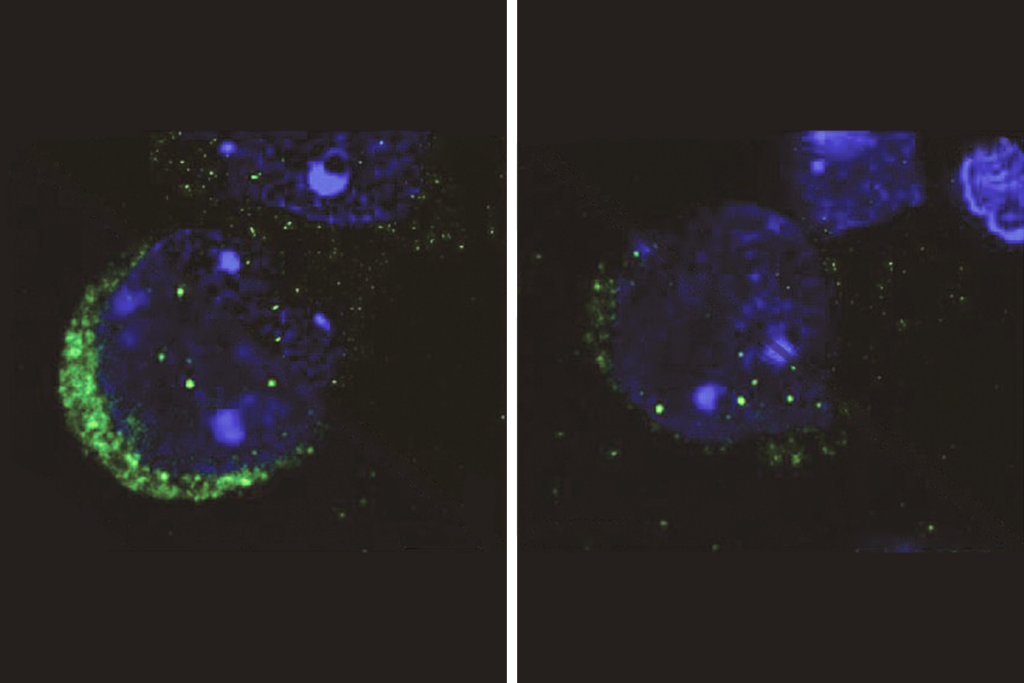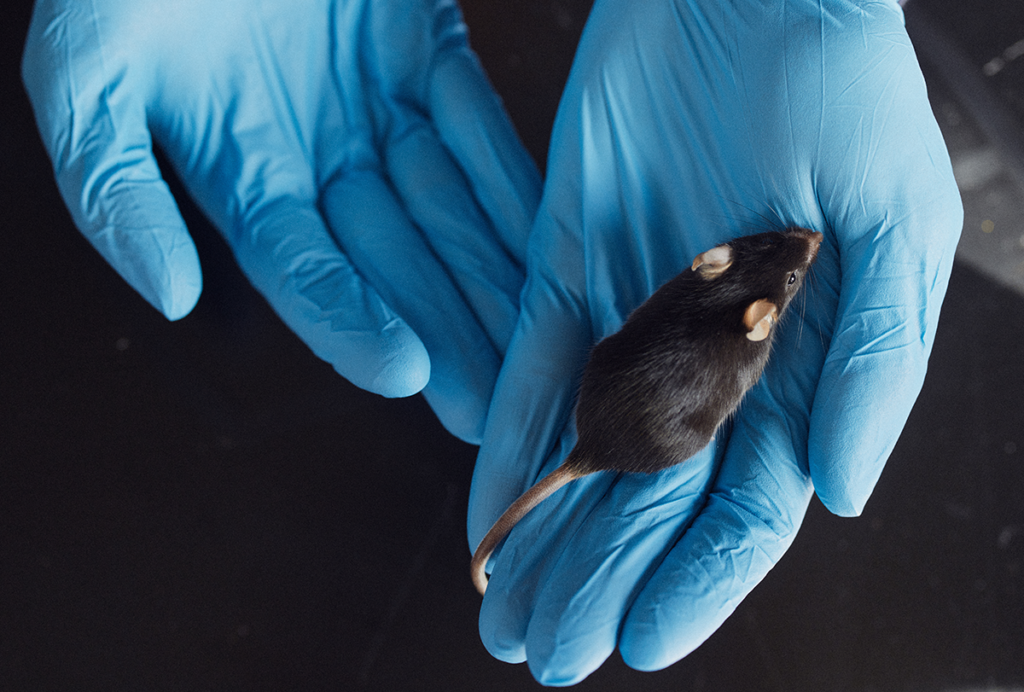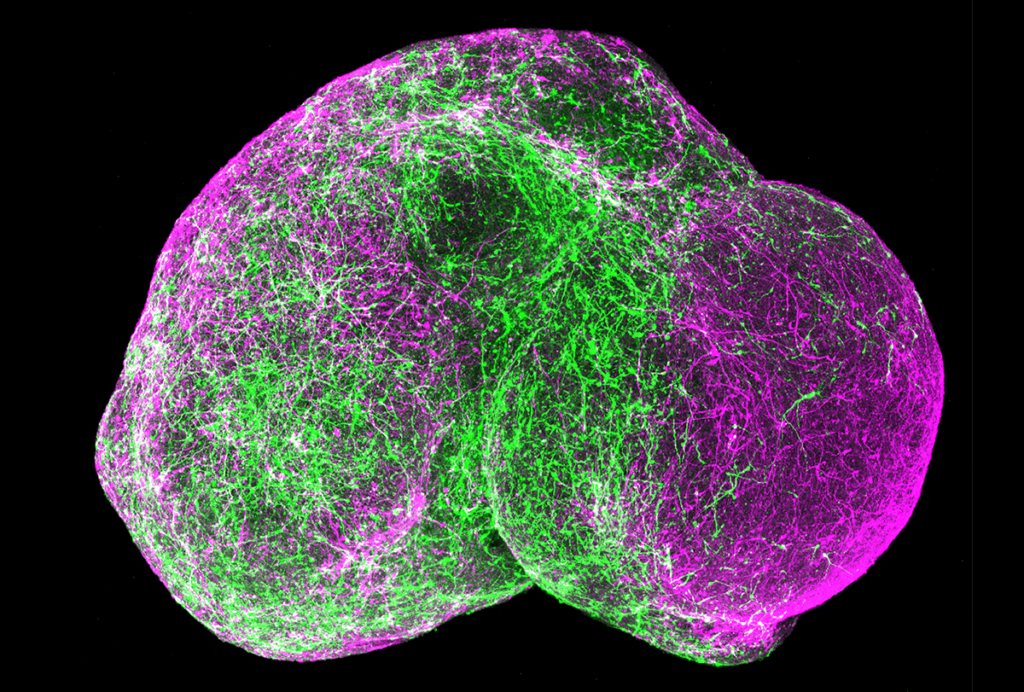Studies diverge on role of mother’s age in autism risk
Two large Scandinavian studies confirm the long-standing theory that older men have a higher risk of fathering children with autism, but they disagree on how a mother’s age drives risk of the disorder.
Two large Scandinavian studies confirm the long-standing theory that older men have a higher risk of fathering children with autism, but they disagree on how a mother’s age drives risk of the disorder.
The first study, based in Denmark and published 22 January in JAMA Psychiatry, found that men age 40 or older and teenage mothers have an increased risk of having children with autism1.
A second study also found that a man’s risk of having a child with autism increases steadily with his age. But this Swedish study, published 9 January in the International Journal of Epidemiology, suggests that a woman’s risk of having a child with autism jumps up sharply when she enters her 30s2.
“The Swedes say older [mums] and the Danes say younger mums — that’s the paradox,” says John McGrath, a researcher on the Danish study and professor of epidemiology and developmental neurobiology at the University of Queensland, Australia.
The two studies join a pool of research linking parental age to the risk of autism and other psychiatric disorders in children. The fact that sperm accumulates mutations with age may explain the source of the risk for older fathers. But it is less clear how a woman’s age might raise autism risk, and whether her age contributes to risk independently of the age of the father.
“That presents a challenge to a lot of these studies that try to look at mothers’ age and fathers’ age separately,” says Dolores Malaspina, professor of psychiatry at the New York University Langone Medical Center, who was not involved in either study. “It’s for that reason I think we’ll find contradictory results as we go forward until we really do clarify the mechanism.”
In the meantime, Malaspina cautions, couples should not base their decisions about having a family on these findings. “The risks are actually quite small for any individual parent.”
Risky ages:
Like many before them, both new studies confirm that men older than 40 are more likely than younger men to have a child with autism.
The Danish study’s autism analysis was part of a larger project: The researchers calculated the relationship between parental age and nearly 20 psychiatric disorders, including intellectual disability and ‘childhood autism,’ a subcategory of the disorder in which symptoms appear before age 3.
They examined the records of 2,894,688 people born in Denmark between 1955 and 2006. Of those, more than 200,000 have some type of psychiatric disorder, 2,669 have childhood autism and 9,782 are diagnosed with intellectual disability. The researchers did not separately consider children who might have been diagnosed with autism after age 3.
Their calculations showed that compared with men between the ages of 25 and 29 years, men aged 40 to 44 show a 42 percent increase in the odds of having a child with childhood autism.
The Swedish study looked at 417,303 Swedes born between 1984 and 2003. Of these, 4,746 people have a diagnosis of autism, including 1,994 who have both autism and intellectual disability.
Compared with 32-year-old fathers, men who are 35 to 39 years old have a 7 percent greater risk of having a child with autism. The risk steadily increases to 39 percent by the time men reach 55 to 59 years of age.
The researchers also found that the father’s age has a bigger effect when the mother is young. Specifically, they found that when the mother is 35 or younger, every additional year of age for the father increases his risk of having a child with autism by 2 percent.
“When mothers are younger, the fathers’ risk is more apparent,” says Brian Lee, senior researcher and assistant professor of epidemiology and biostatistics at Drexel University in Philadelphia. “But as mothers get older, their risk tends to overshadow any risk from the fathers.”
A 2010 Californian study in Autism Research and a 2012 Danish study in the Annals of Epidemiology also found that the father’s age is significant only when the mother is younger than 30 and 35, respectively.
Age spotlight:
The two new studies agree that the father’s age is important but diverge sharply in assessing the risk from the mother’s age.
The Swedish study found that autism risk increases with the mother’s age. Compared with a 29-year-old woman, a woman who is 30 to 34 years old shows a 7 percent increase in the risk of having a child with autism. The increase jumps to 32 percent at 35 to 39 years of age and to a whopping 75 percent increase in risk by 40 to 45 years old.
Overall, the researchers say, women in their 30s have a higher risk of having a child with autism than men of the same age do. Women in this age bracket also increase this risk by 4 percent for every year of their age if their partners are younger than 40.
In contrast, the Danish study found that women of the youngest age range in their study, 12 to 19 years, carry the highest risk of having a child with autism or intellectual disability.
“I think we know what’s driving the older dads,” McGrath says. “But I’m not really sure what’s driving the younger mums.” Unplanned pregnancy, interrupted schooling, substance abuse and other psychosocial factors may all influence the findings, he says.
Interestingly, both studies found that advanced age in the mother and the father drive intellectual disability in children with autism. Compared with 29-year-old parents, women between the ages of 40 to 45 have twice the odds of having a child with both autism and intellectual disability, and men who are 50 to 59 years old have a 52 higher percent of having a child with both disorders, the Swedish study found.
Previous studies had reported mixed findings about the contribution of the father’s age to intellectual disability3, 4.
Because autism is so heterogeneous, it’s useful to know whether a parent’s age increases the risk of any accompanying conditions such as intellectual disability, notes Malaspina. “That was an advantage of this study that makes it particularly special.”
The Danish study also looked at intellectual disability, but separately from autism. That study also found that compared with parents between 25 and 29 years, fathers who are 40 to 44 years old are almost 60 percent more likely, and women in that age range are 34 percent more likely, to have a child with intellectual disability.
References:
1: McGrath J.J. et al. JAMA Psychiatry Epub ahead of print (2014) PubMed
2: Idring S. et al. Int. J. Epidemiol. Epub ahead of print (2014) PubMed
3: Saha S. et al. PLoS Med. 6,e40 (2009) PubMed
4: Myrskylä M. et al. Am. J. Epidemiol. 177, 649-655 (2013) PubMed
Recommended reading

New tool may help untangle downstream effects of autism-linked genes

NIH neurodevelopmental assessment system now available as iPad app

Molecular changes after MECP2 loss may drive Rett syndrome traits
Explore more from The Transmitter

Organoids and assembloids offer a new window into human brain
